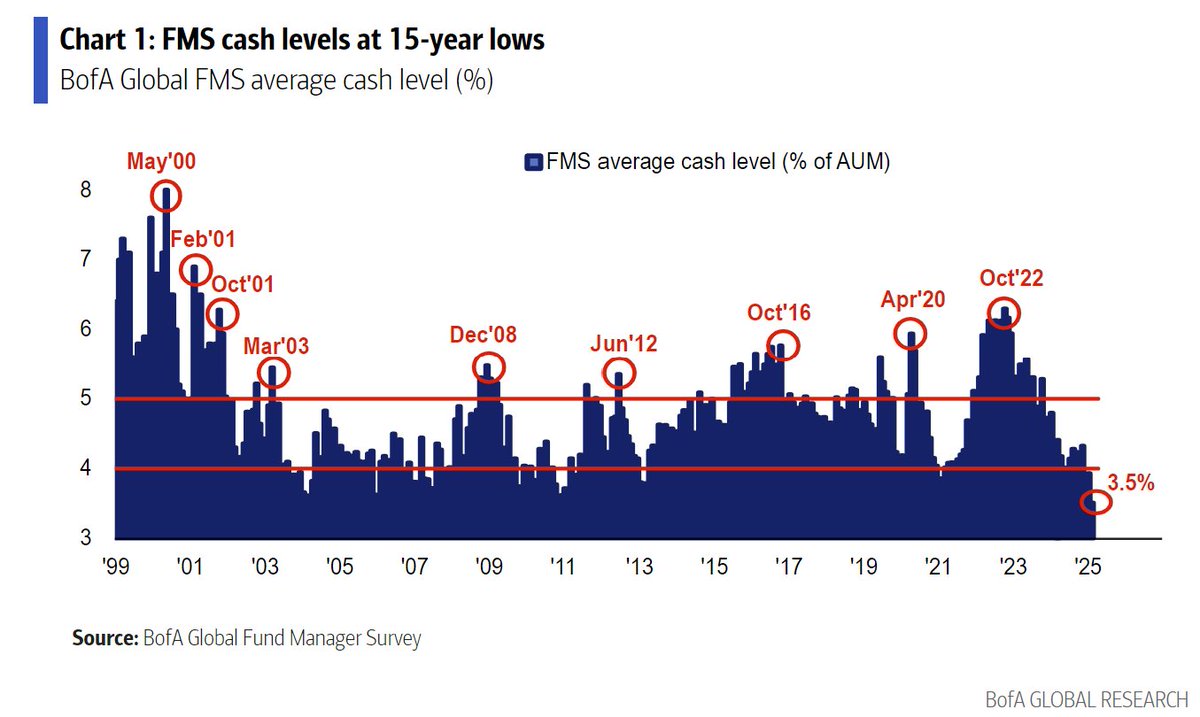1/ One of the strangest things, at least for me, to read on FinTwit is the following statement:
“Even though stocks are expensive, bonds yield next to nothing, so there are is alternative.”
Umm 🤔... yes there is.
They are called alternative assets for a reason.
“Even though stocks are expensive, bonds yield next to nothing, so there are is alternative.”
Umm 🤔... yes there is.
They are called alternative assets for a reason.
2/ • single family & multifamily RE
• self storage & multi-use property
• precious metals
• precious metal mining companies
• litigation financing
• invoice financing
• senior private credit
• private equity & venture capital
• art & collectables
• self storage & multi-use property
• precious metals
• precious metal mining companies
• litigation financing
• invoice financing
• senior private credit
• private equity & venture capital
• art & collectables
3/ • construction senior debt
• construction mezzanine debt
• agricultural private equity
• farmland (grains & softs)
• joint ventures & partnerships
• long/short hedge funds
• volatility based hedge funds
• star manager hedge funds
• emerging market tourism RE
• construction mezzanine debt
• agricultural private equity
• farmland (grains & softs)
• joint ventures & partnerships
• long/short hedge funds
• volatility based hedge funds
• star manager hedge funds
• emerging market tourism RE
4/ • international cash deposits
• infrastructure private equity
• infrastructure private debt
• alternative energy investments
• crowdfunding & peer2peer
• small & medium sizes businesses
• e-commerce private business
• foreign exchange investments
• energy MLPs
• infrastructure private equity
• infrastructure private debt
• alternative energy investments
• crowdfunding & peer2peer
• small & medium sizes businesses
• e-commerce private business
• foreign exchange investments
• energy MLPs
5/ I’m sure I’ve missed a lot. Here are some background stories.
A German family I know invest into beef + avocado farms & soybean crops in Argentina.
Gentleman I talked with last week left AU to Silicon Valley with nothing, did a start up, made millions on a successful exit.
A German family I know invest into beef + avocado farms & soybean crops in Argentina.
Gentleman I talked with last week left AU to Silicon Valley with nothing, did a start up, made millions on a successful exit.
6/ My own family focuses on importing high end materials around the world & helping clients build/renovate luxury homes. We also do our own projects, too.
My best friend started a mining exploration company, later expanded it to mining traffic control company. Made millions.
My best friend started a mining exploration company, later expanded it to mining traffic control company. Made millions.
7/ I rent my penthouse in Malta. My landlord owns the whole building, and several other buildings around the island. He made a fortune in multifamily real estate.
I was on a boat sailing local islands last week with a son of a family that made wealth in energy & oil business.
I was on a boat sailing local islands last week with a son of a family that made wealth in energy & oil business.
8/ Today I was a on telephone conversation with a gentleman from the States who is interested to diversify his portfolio into UK real estate debt.
My mentor made a fortune in Sydney (Aus) real estate & passed away at an old age with $150 million having never touched stocks.
My mentor made a fortune in Sydney (Aus) real estate & passed away at an old age with $150 million having never touched stocks.
9/ Ex-client from German made a fortune investing in renewable energy and wind farms. He did projects in Australia, South Africa and few other places.
My ex-girlfriend in HK is half Chinese half America. Her father moved from Boston to Shanghai in 1974, everyone said his crazy.
My ex-girlfriend in HK is half Chinese half America. Her father moved from Boston to Shanghai in 1974, everyone said his crazy.
10/ He ended up making over 500 million and IPO his company on the exchange several years back. Was originally a lawyer, speaks perfect Mandarin & English, had a client called Proctor & Gamble (you might know them) and when he couldn’t find them a fragrance supplier...
11/ ...he ended up started his own company / manufacturing business in Tainjin and eventually grew it to a monster. Never invested in stocks.
What’s the point of the list I made and the stories I shared?
Firstly, wanted to share these stories as inspiration of what’s possible!
What’s the point of the list I made and the stories I shared?
Firstly, wanted to share these stories as inspiration of what’s possible!
12/ Secondly, Wall Street is trying to convince you stocks are the only way to invest.
I have travelled half of the world!& met many successful people. Obviously, I’m still young but I’m yet to meet a person who got RICH of stocks.
No one used shares as a vehicle to success.
I have travelled half of the world!& met many successful people. Obviously, I’m still young but I’m yet to meet a person who got RICH of stocks.
No one used shares as a vehicle to success.
• • •
Missing some Tweet in this thread? You can try to
force a refresh















